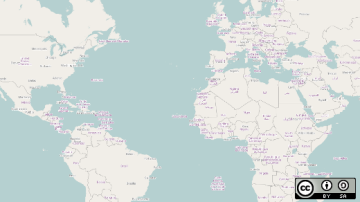
Eric started contributing to various open source projects in early 2007. Known in the community as Sparks, he is often seen writing about security and preparedness. His other interests include communication technologies, Cold War history, cartography, and sailing. He maintains the Fedora Security Guide and other publications and software packages for the Fedora Project.



Authored Comments
Yes, you are correct in saying that other countries sometimes also make available their cartography data. I didn't mean to suggest that the US was the only one although I can see how my words didn't quite work well there. :) You bring up an excellent point that OSM is that long-term respository for data that can be used for a variety of projects.
I'll be working on a 'part two' to this article that discusses more of why people contribute and where/what open data has been imported. I want to beat the streets a bit more and talk to more people.
Thanks for the comment!
Great article. I wonder what advice you would have for people wanting to approach their local libraries to support more open solutions. I know my local library has ten computers running Microsoft Windows operating system and old Internet Explorer browsers and their ILS software has one of the worst search features I've seen. It's so bad that I end up using WorldCat just to find things in my library.